London's Isokon Building opens a gallery to tell its rich history as the home of modernist designers, writers and spies
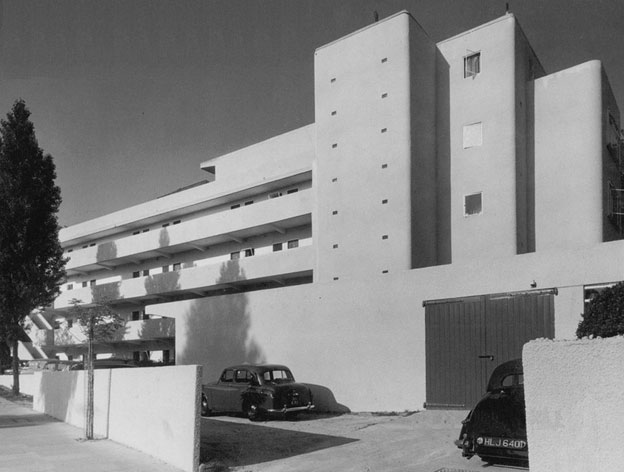
'The biggest challenge was knowing which stories to tell,' says Magnus Englund, managing director of furniture store Skandium. He's referring to the new gallery which opens today in the Isokon Building - also known as the Lawn Road Flats - in Hampstead. Built in 1934, the daringly modern apartment block was the epicentre of North London's avant-garde circle during the 1930s and 1940s.
The Isokon Gallery, once the residents' garage, certainly has no shortage of material to exhibit. Walter Gropius, Paul Nash and Agatha Christie were among its famous residents, and its gatherings of leading architects, artists, writers and thinkers in the building's Isobar restaurant were legendary.
Englund lives in the penthouse, and has immaculately restored it to its original state. Honey-coloured curved plywood lines every wall (the building's founders Jack and Molly Pritchard were plywood specialists). 'The Pritchards were a remarkable couple, and plywood is the thread which runs through the story,' says Englund. On moving in, Englund discovered there had been a plan to open the gallery a decade before, and he contacted Avanti Architects, who had renovated the entire building in the early noughties, and embarked upon raising the funds for the gallery.
As well as providing a potted history of the building, its founders, its architect Wells Coates, and its famous residents, the gallery also features furniture, produced by Jack Pritchard under the Isokon furniture brand. Throughout the 1930s, he collaborated with many of the building's architect residents, among them Walter Gropius, Marcel Breuer and Lazlo Moholy Nagy to create pieces for the flats. Originals such as the 'Penguin Donkey' bookstand by resident Egon Riss and Breuer's 'Long Chair' are on display alongside photos of the flats in various states of repair.
Isokon was billed as North London's only concrete home during the war, and housed spies and intelligence agents - as documented in a recent book by David Burke. It then slowly fell into disrepair and by the 1990s was virtually derelict before its renovation. With the new gallery, it is more complete than it has ever been.
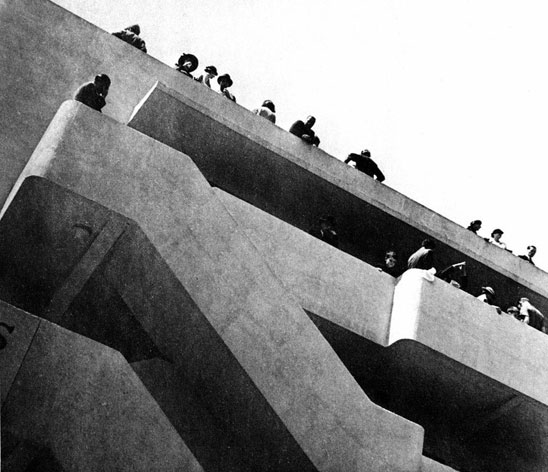
The daringly modern apartment block, founded by Jack and Molly Pritchard and designed by Wells Coates, was the epicentre of North London's avant-garde circle during the 1930s and 1940s, and counted Walter Gropius, Paul Nash and Agatha Christie among its residents, as well as spies and intelligence agents.
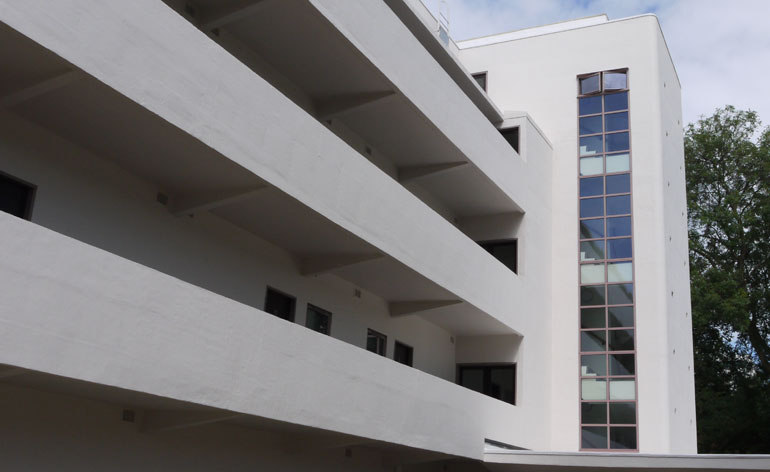
The building, pictured as it is today, now includes a freshly opened gallery in what used to be the garage, filled with archive material from its storied past
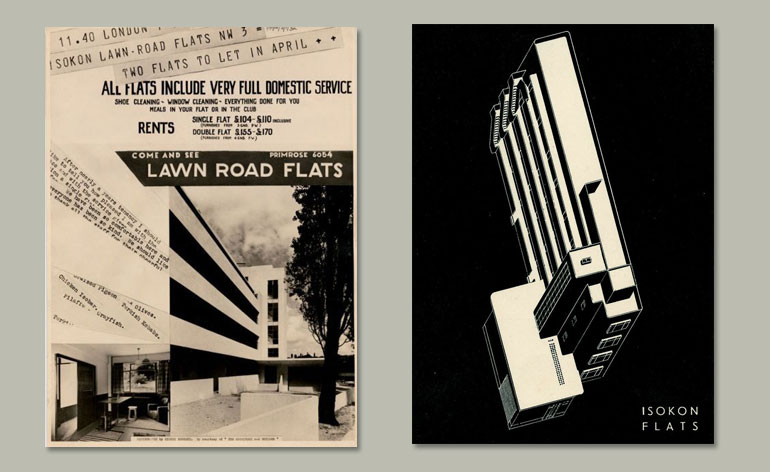
Original marketing material for the apartment block, billed as North London's only concrete home during the war
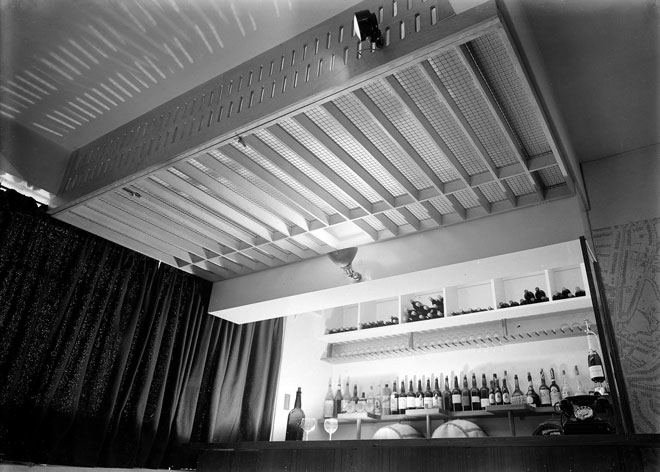
The gatherings of leading architects, artists, writers and thinkers in the building's Isobar restaurant were legendary
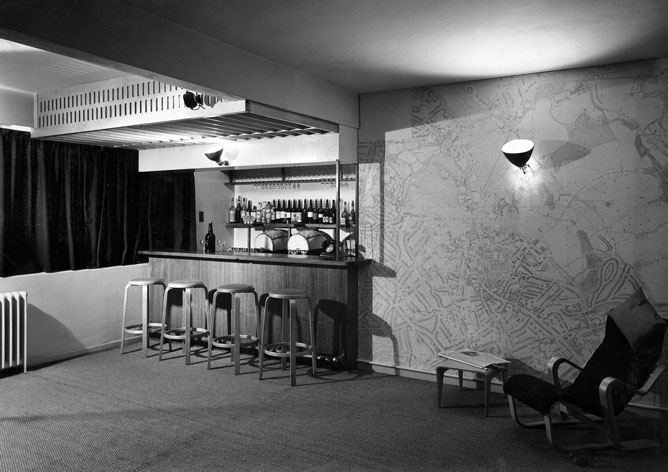
In the Isobar, these creatives rubbed shoulders with some of the most dangerous communist spies ever to operate in Britain
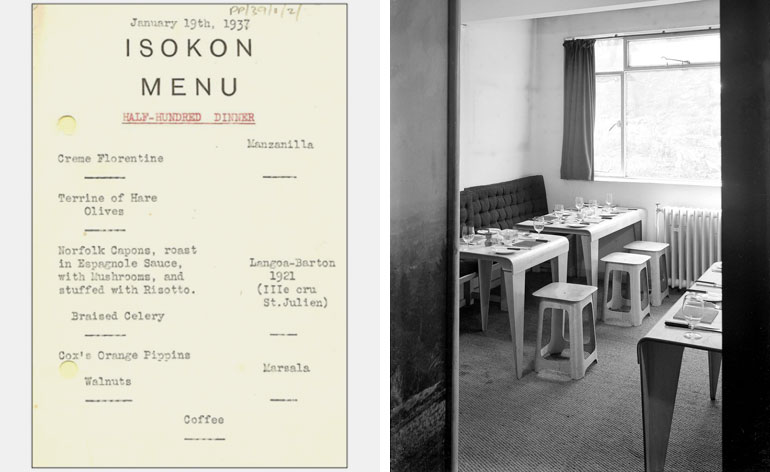
A 1937 menu for the restaurant, which sadly no longer exists
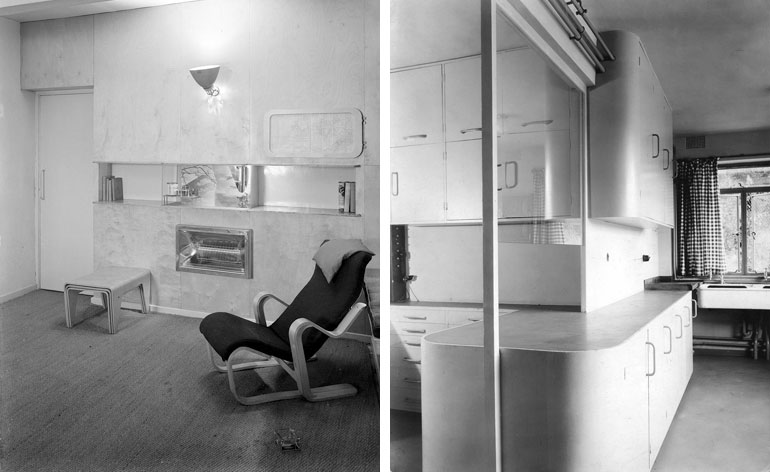
Honey-coloured curved plywood lined every wall (the building's founders were plywood specialists)
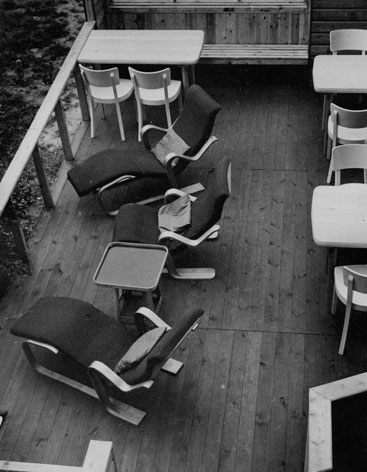
As well as providing a potted history of the building, its founders, its architect Wells Coates, and its famous residents, the gallery also features furniture, produced by Jack Pritchard under the Isokon brand, as seen here in what was the Isobar's outdoor veranda. Throughout the 1930s, he collaborated with many of the building's architect residents, among them Walter Gropius, Marcel Breuer and Lazlo Moholy Nagy to create pieces for the flats.
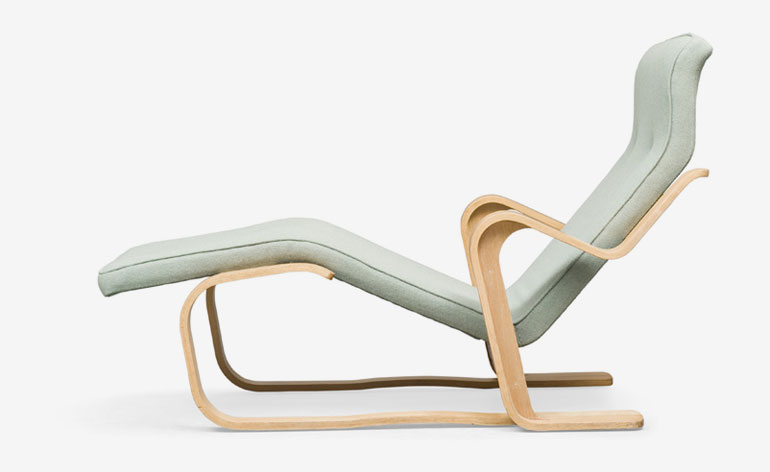
Originals pieces of furniture, such as the 'Long Chair' in 1936, are on display in the gallery
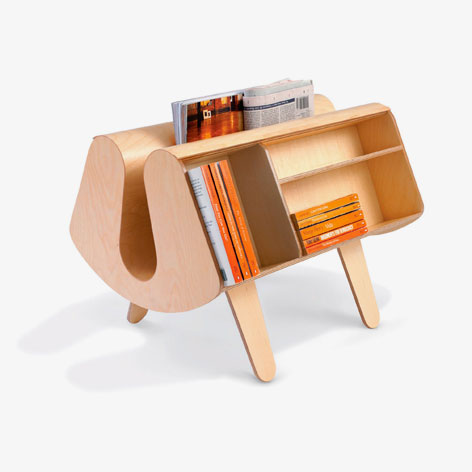
Penguin Donkey' bookstand by former resident Egon Riss
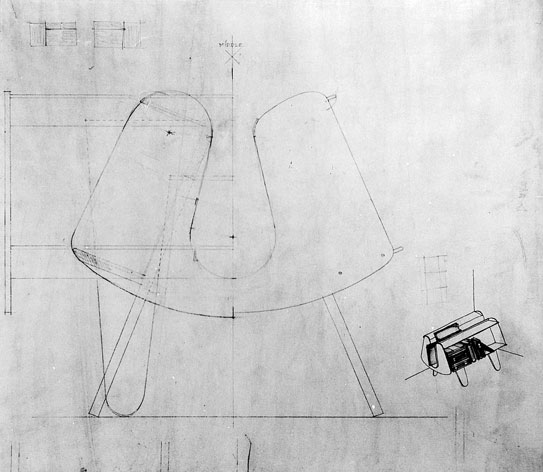
A sketch of the Penguin Donkey, designed in 1939
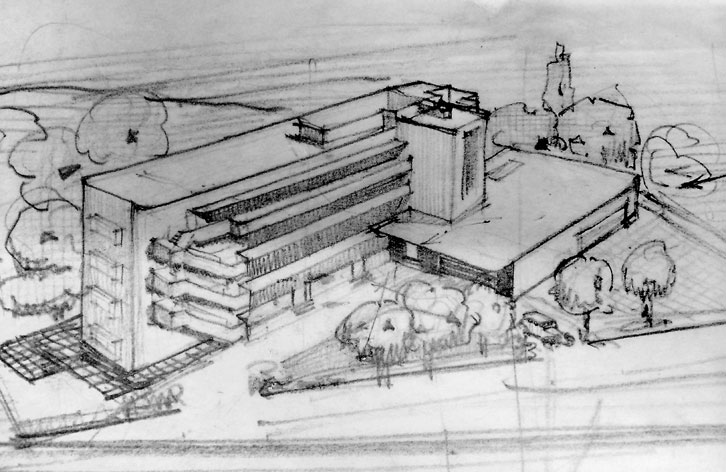
A sketch of the building
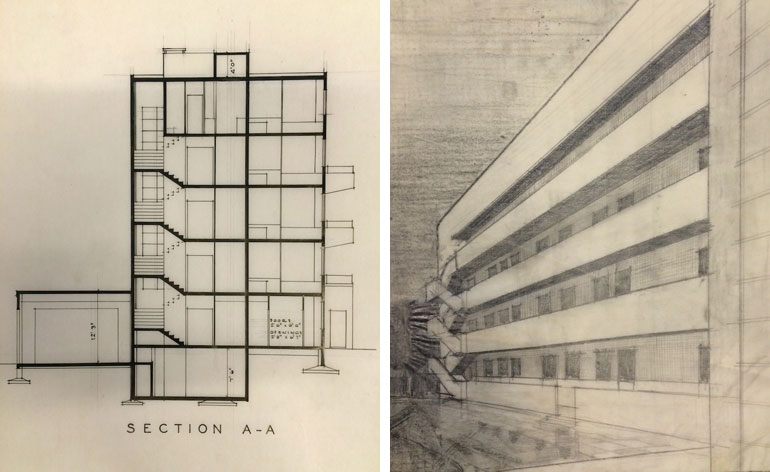
When the building opened, it housed 32 flats in total
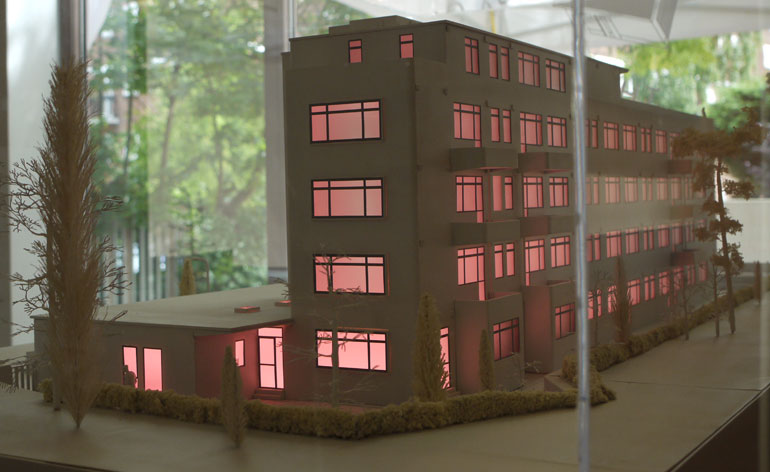
A model of the building - a gift from Richard Rogers - now resides in the gallery

By the end of the 20th century, the building had fallen into a bad state of repair
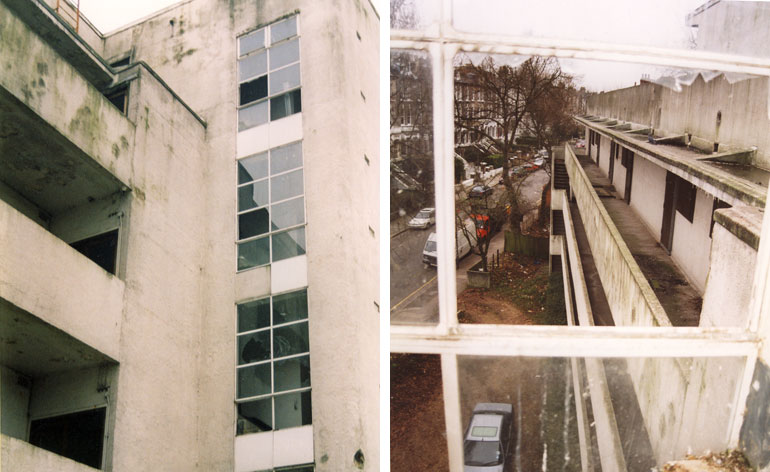
The ruins of the building before it underwent a major restoration in the noughties by Avanti Architects

Some of the original wooden cabinets remained but many of the plywood walls had been papered over.
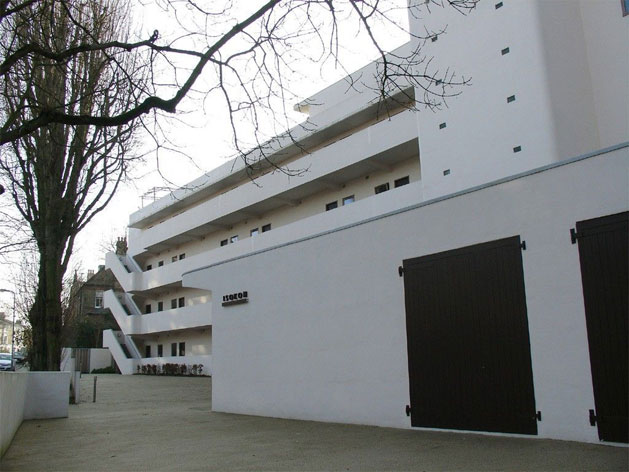
The Isokon Gallery Trust was established by John Allan and Fiona Lamb of Avanti Architects, who, with Notting Hill Housing, restored the building in 2004. Skandium co-founder and MD Magnus Englund, who lives in a penthouse apartment in the building, has also been instrumental in establishing the new gallery

The building's pristine lines
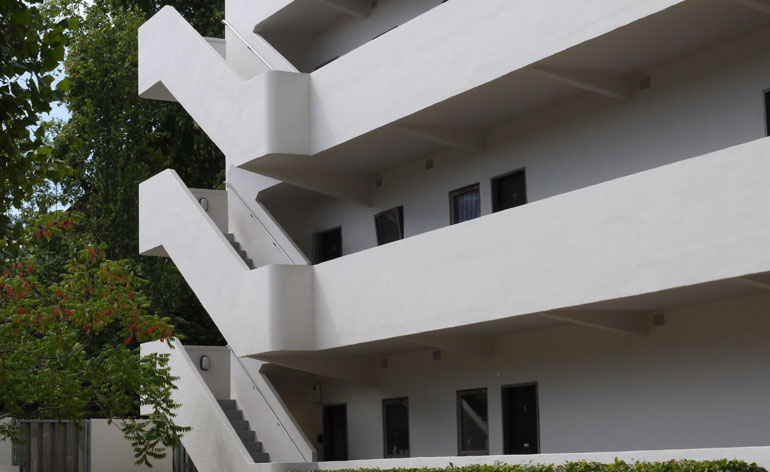
Walkways wrap around the building
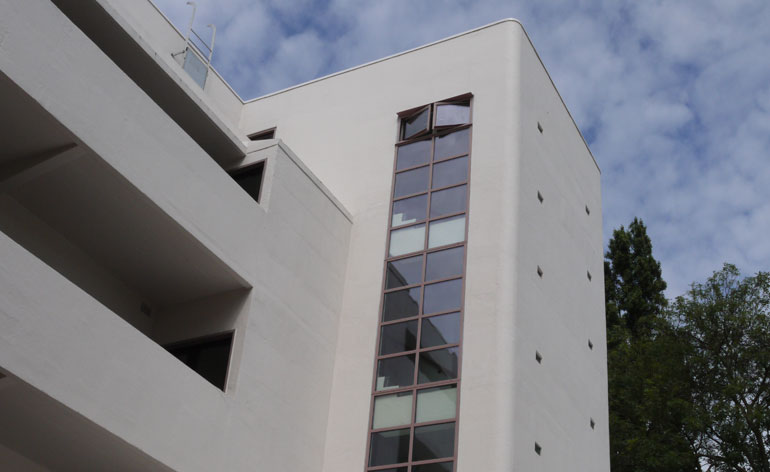
The opening of the new gallery marks the 80th anniversary of the building's opening
ADDRESS
The Isokon Gallery
Lawn Road
Hampstead
London NW3 2XD
Receive our daily digest of inspiration, escapism and design stories from around the world direct to your inbox.
Emma O'Kelly is a freelance journalist and author based in London. Her books include Sauna: The Power of Deep Heat and she is currently working on a UK guide to wild saunas, due to be published in 2025.
-
 Eclectic and colourful, Charlie Ferrer’s home reflects the interior designer’s personal and professional evolution
Eclectic and colourful, Charlie Ferrer’s home reflects the interior designer’s personal and professional evolutionThe New York interior designer invites us into his new Greenwich Village home: come on in
-
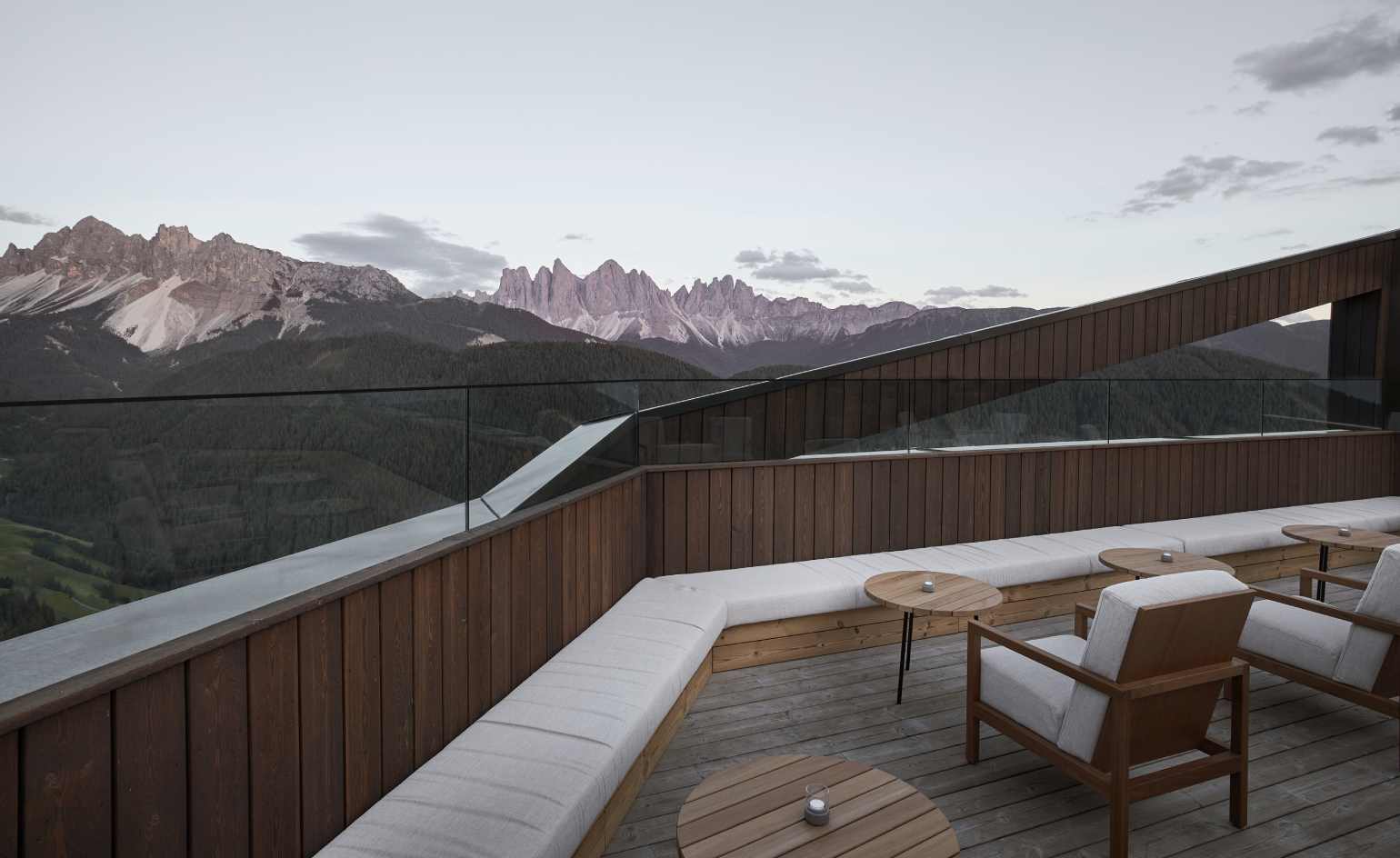 Heading to the 2026 Winter Olympic Games? Don’t miss these stops along the way
Heading to the 2026 Winter Olympic Games? Don’t miss these stops along the wayAs the anticipated winter games draw near, Wallpaper*’s Milan editor, Laura May Todd, shares where to stay, eat, drink and relax in the Dolomites
-
 Step inside this resilient, river-facing cabin for a life with ‘less stuff’
Step inside this resilient, river-facing cabin for a life with ‘less stuff’A tough little cabin designed by architects Wittman Estes, with a big view of the Pacific Northwest's Wenatchee River, is the perfect cosy retreat